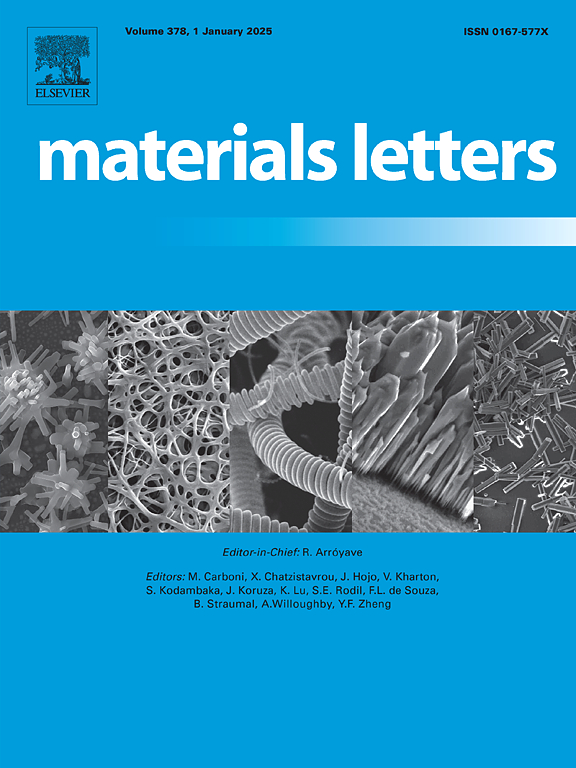Bio-based hydrogel sensor based on Curdlan/carboxymethyl chitosan for monitoring human physiological activities
IF 2.7
4区 材料科学
Q3 MATERIALS SCIENCE, MULTIDISCIPLINARY
引用次数: 0
Abstract
Bio-based hydrogels are ideal for flexible sensors due to their biocompatibility and adjustable physicochemical properties. This study presents a bio-based hydrogel composite exhibiting low-temperature resistance and antibacterial properties. The composite utilizes curdlan and carboxymethyl chitosan (CMCS) as substrates, with silver nanoparticles (AgNPs) incorporated to form a dual-network hydrogel through hydrogen and ionic bonds. This hydrogel achieves a tensile strength of up to 1.5 MPa and demonstrates growth inhibition rates of 98.57 % for E. coli and 97.60 % for S. aureus. The conductive sensitivity (GF) reaches 3.37, and the response time is 0.21 s. This sensor is applicable for monitoring physiological activities, such as limb movements and facial expressions.

求助全文
约1分钟内获得全文
求助全文
来源期刊

Materials Letters
工程技术-材料科学:综合
CiteScore
5.60
自引率
3.30%
发文量
1948
审稿时长
50 days
期刊介绍:
Materials Letters has an open access mirror journal Materials Letters: X, sharing the same aims and scope, editorial team, submission system and rigorous peer review.
Materials Letters is dedicated to publishing novel, cutting edge reports of broad interest to the materials community. The journal provides a forum for materials scientists and engineers, physicists, and chemists to rapidly communicate on the most important topics in the field of materials.
Contributions include, but are not limited to, a variety of topics such as:
• Materials - Metals and alloys, amorphous solids, ceramics, composites, polymers, semiconductors
• Applications - Structural, opto-electronic, magnetic, medical, MEMS, sensors, smart
• Characterization - Analytical, microscopy, scanning probes, nanoscopic, optical, electrical, magnetic, acoustic, spectroscopic, diffraction
• Novel Materials - Micro and nanostructures (nanowires, nanotubes, nanoparticles), nanocomposites, thin films, superlattices, quantum dots.
• Processing - Crystal growth, thin film processing, sol-gel processing, mechanical processing, assembly, nanocrystalline processing.
• Properties - Mechanical, magnetic, optical, electrical, ferroelectric, thermal, interfacial, transport, thermodynamic
• Synthesis - Quenching, solid state, solidification, solution synthesis, vapor deposition, high pressure, explosive
 求助内容:
求助内容: 应助结果提醒方式:
应助结果提醒方式:


